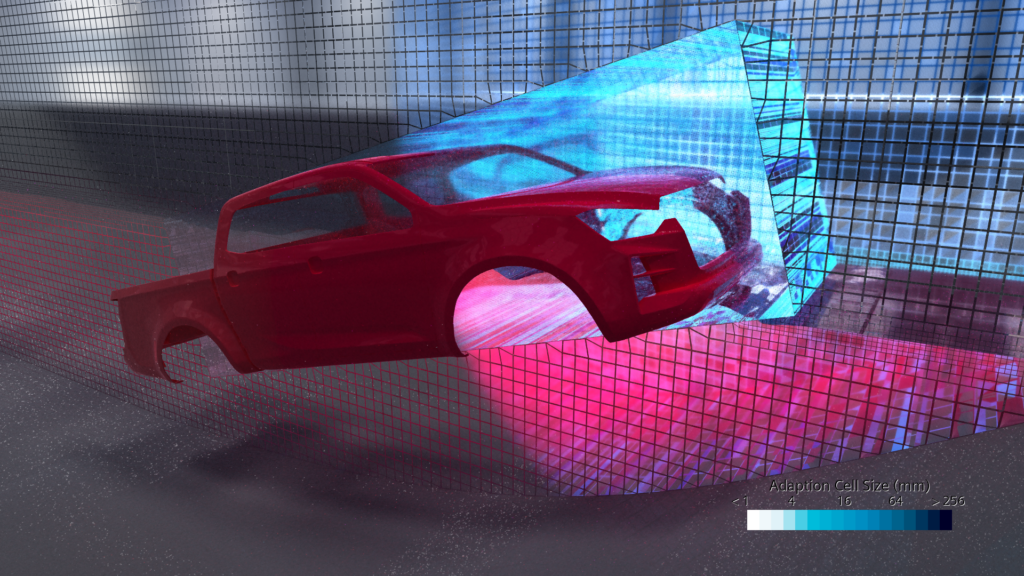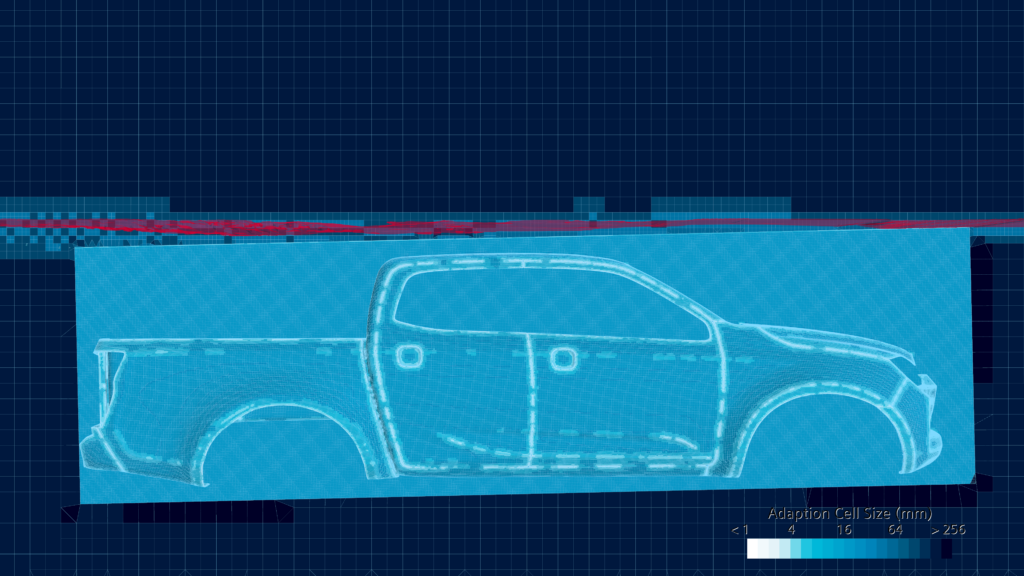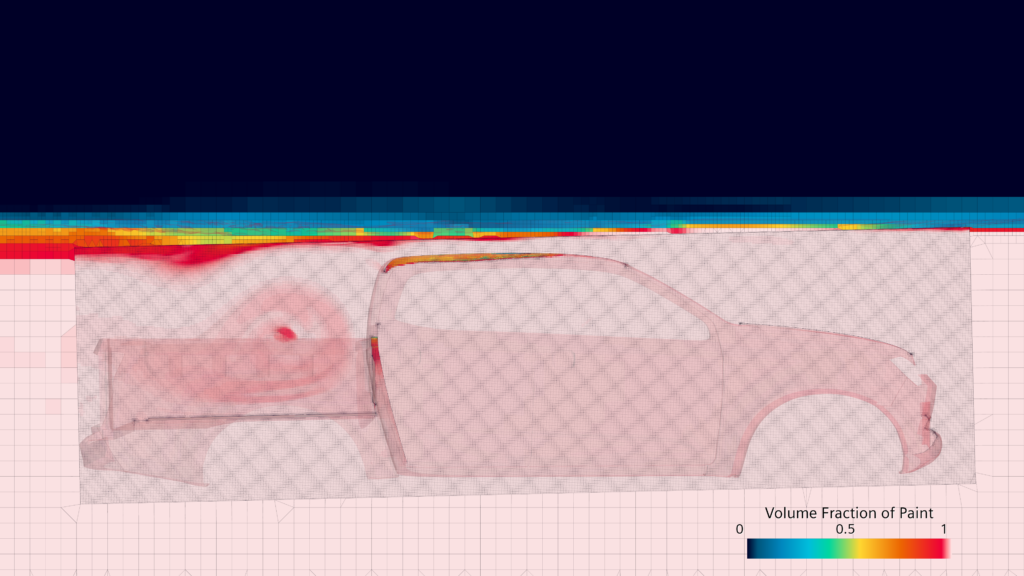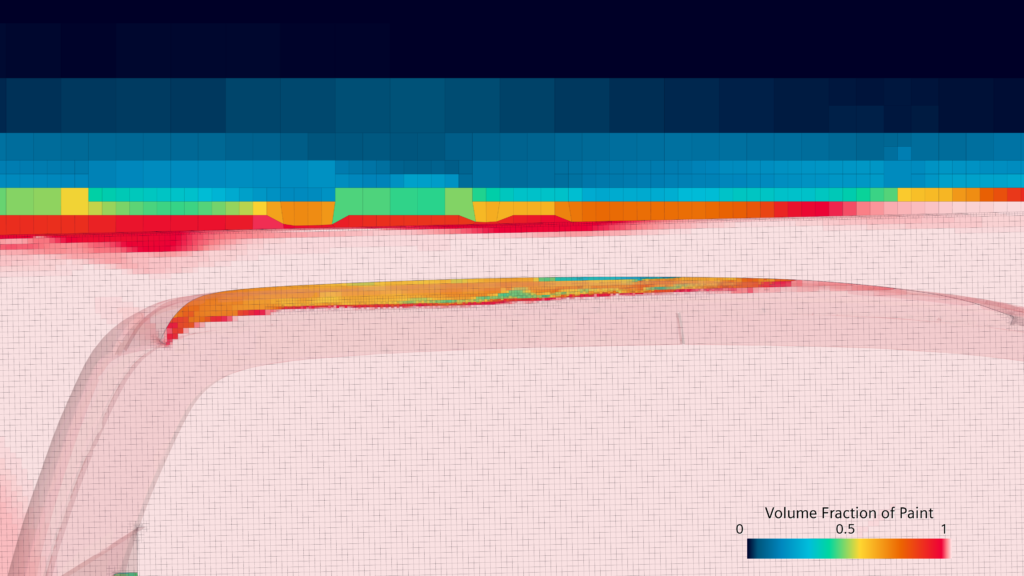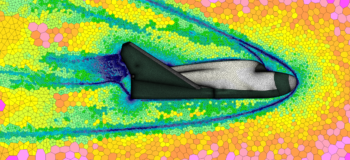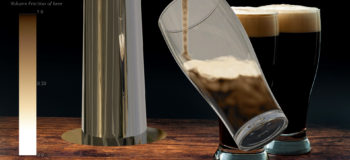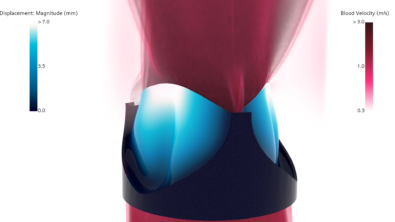Smooth coats & perfect pours: How the Virtual Body method shapes paint jobs and bottle filling
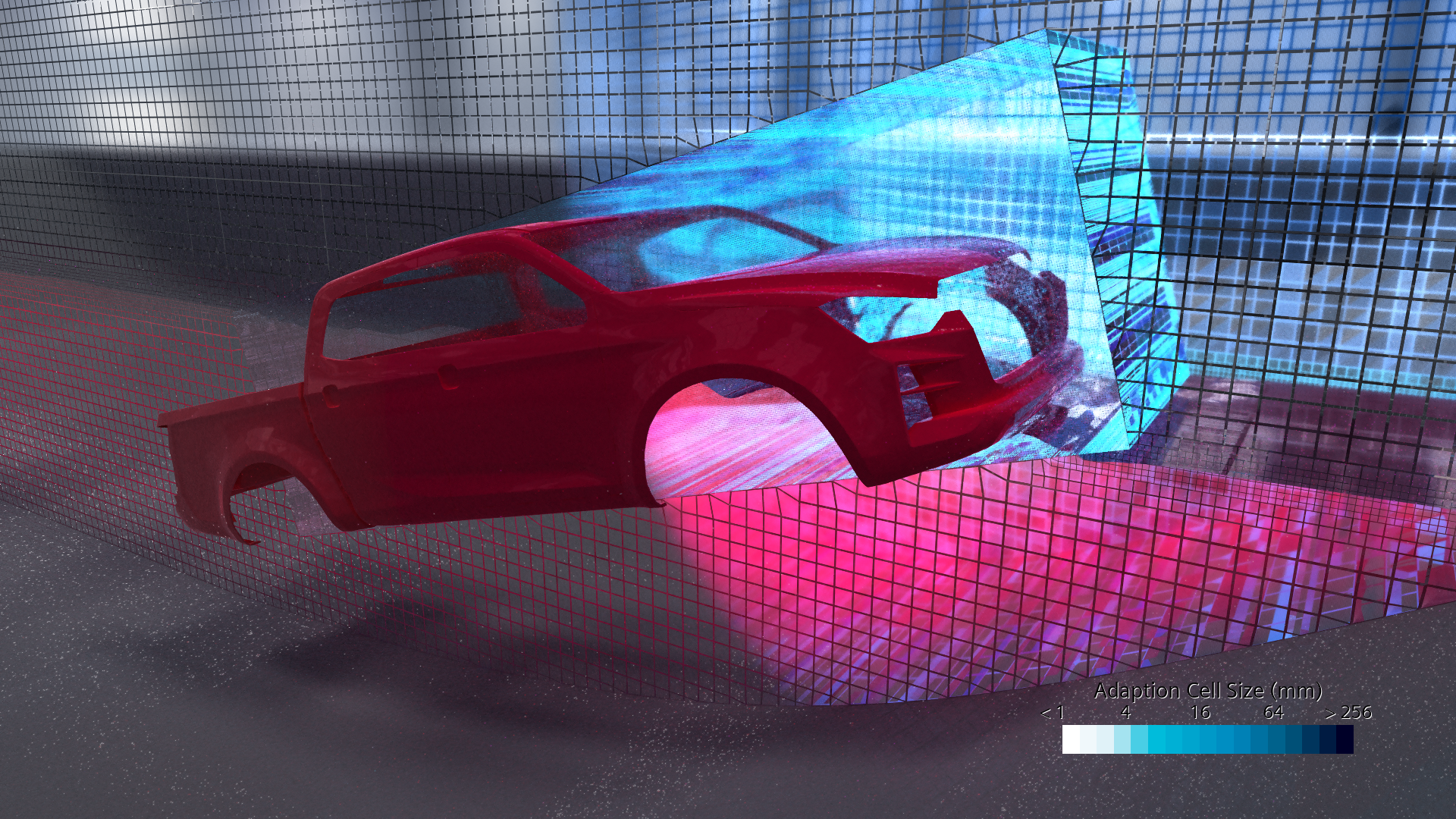
No this is not a scene from the next Bond movie. No, despite all disruption in the automotive industry and world politics, 007 has not swapped his Lotus Esprit from 1977 for a pick-up truck in 2025.
No, this dip is not just for some secret service special agent. This dip is for everyone. Or -at least- everyone who owns a car. What you are looking at in the above video is a fundamentally important manufacturing step in the life of any car: electro-dip paint coating of the car body-in-white. “But why would I care”, I hear you ask. Well, the last thing you want as an owner is an inhomogeneous distribution of paint thickness across your car – ask the car dealer when you resell the car as he measures the paint thickness around the body.
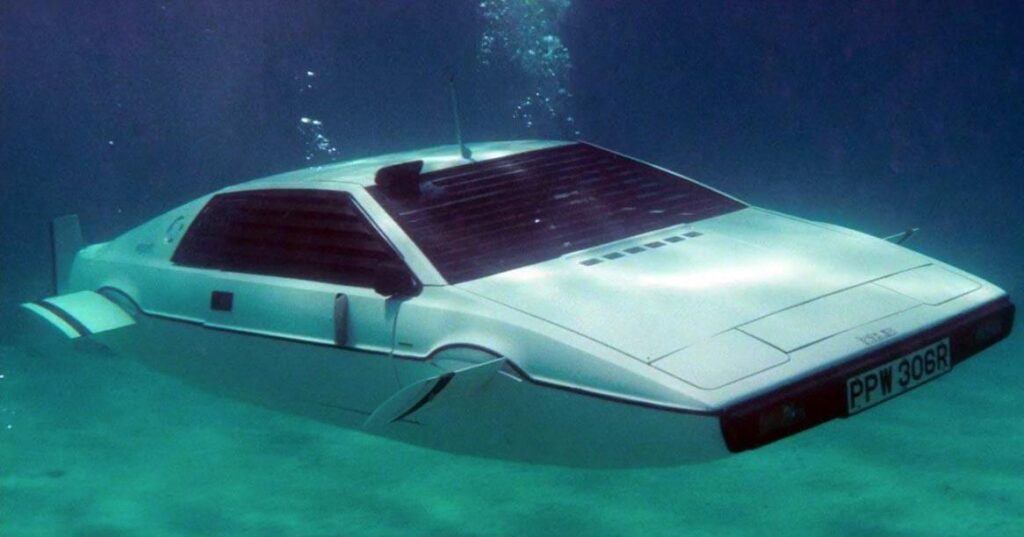
Smooth Coats & Perfect Pours – no easy mission
Just like in spy missions, when painting a car, every detail matters. Entrained air forming from crevices or non-ideal motion as the car dips in may spoil the paint distribution and lead to bubbles and ugly artefacts on what was supposed to be a shiny surface. When you pull the car through a pool of paint, the way the paint flows, its viscosity and its surface tension determines how smoothly it coats the surface.
Ultimately, the secret to the quality of the final product lies in the interaction between a moving solid body (your car body) and a complex fluid (the pool of paint). But this is not just true for painting a car. If you carefully look around you, you will notice dozens of examples where the prescribed motion of a solid determines the paths of a fluid. Examples, anyone? Well, let me add a yummy one:
Ever wondered how the Yogurt you just ate made it smoothly into its cup? Together with 1000s of more Yogurts per minute (filling speed is of essence here!). In any filling operation, interaction between some nozzle motion and fluid dynamics play a crucial role. Too much speed or pressure, and the liquid splashes everywhere; too little, and the cup or bottle won’t fill fast enough or properly.
It is a rather secret mission that engineers are on day in day out. A mission to make sure that these manufacturing processes are done right and without costly trial and error. And if you now wonder how they do this? The short answer is: CFD simulation. And the longer answer is this:
Virtual Body method shapes paint jobs and precision filling
To model complex interactions between a moving solid body and a surrounding fluid, engineers rely on advanced CFD simulation techniques. More specifically, moving mesh technologies that allow to simulate the motion of a solid (boundary) inside its surrounding as it affects the fluid surrounding it.
An established method to achieve this is the overset approach. This technique provides both flexibility and accuracy by combining background and body-fitted meshes, but it comes with high computational costs and comparably complex setups. This is where the Immersed Boundary Method (IBM) shines—offering a powerful and efficient alternative. By embedding objects within a background mesh, IBM simplifies the simulation process while maintaining accuracy, reducing computational overhead, and improving scalability.
Now, for the first time, in the new version of Simcenter STAR-CCM+ 2502, a special flavor of IBM, known as the Virtual Body method (VBM), is available to tackle such challenging applications. From electro-dip coating to fluid filling of containers to pumping fluids and air, this method enables CFD simulation engineers to sift through their key performance indicators more quickly and easily, thereby reducing turn-around time.
How does the Virtual Body method work?
In the Virtual Body method, cell centroids located inside an object are deactivated, similar to the overset grid method. Subsequently, vertices near the newly established boundary are projected or snapped onto it (see image below).

This method is highly adaptable to meet varying accuracy requirements. By selecting input surfaces that define the virtual body (as shown in the image above), adaptive mesh refinement can be employed to attain the desired level of precision. For lower refinement levels, this approach enables the production of quick, lower fidelity CFD results, useful in the initial phases of design such as the conceptual design stage or preliminary assessments.
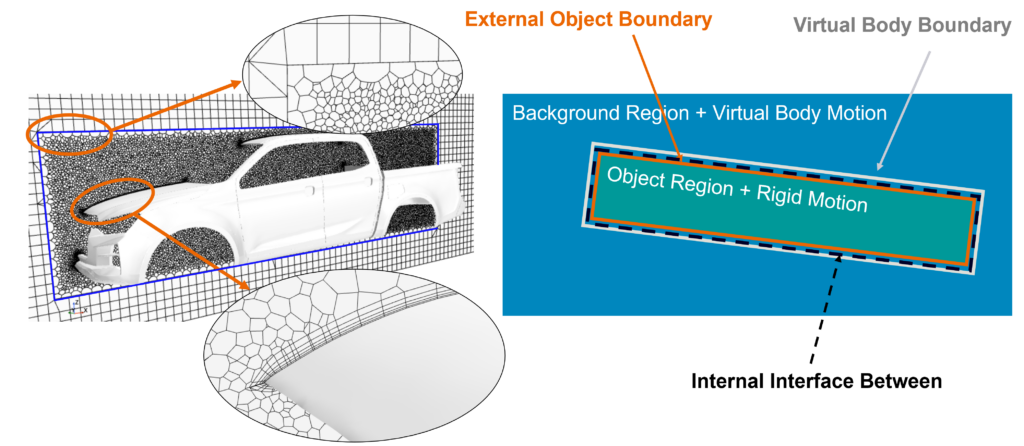
Alternatively, a boundary can be placed around the input geometry (illustrated by the blue box in the image above, left) to represent the virtual body. Within this boundary, a body-fitted mesh can be generated, allowing users significant flexibility to create high-fidelity meshes, including prism layers. This approach can produce highly accurate results. Furthermore, adaptive mesh refinement can be utilized to precisely refine the mesh along the virtual boundary.
Dip, dip, Done: simulating electro-dip coating a body-in-white with Virtual Body method
In electro-dip coating simulations, the focus is on understanding how fluid flow and surface interactions affect coating uniformity, coverage efficiency, surface quality post-coating, etc. The Virtual Body method is the ideal method for these applications, as it can offer highly accurate results with superior scalability and reduced computation time.

Simulation performance for paint dipping leveraging the Virtual Body method
Virtual Body, Real Refill
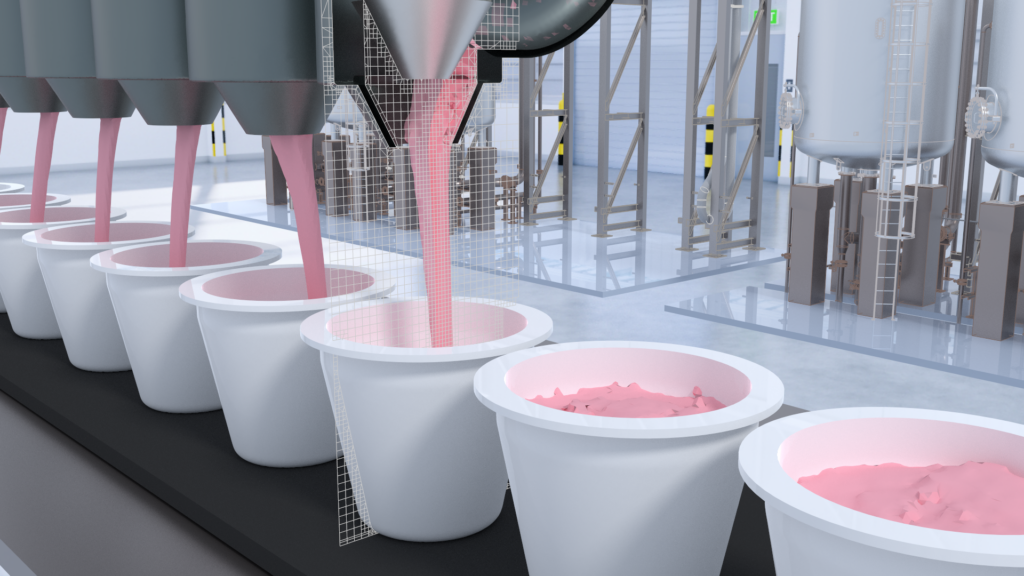
Simulating filling applications are all about capturing the delicate interaction of the fluid and the container. From ensuring consistent flow to preventing splashes and air bubbles, these simulations help engineers optimize efficiency, precision, and quality in high-speed production lines.

The remarkable scalability offered by the Virtual Body method enables significantly faster design iterations and more efficient process optimization for bottle and yogurt filling applications. By streamlining production and enhancing adaptability, this method gives manufacturers a significant competitive edge in delivering high quality products efficiently.
Born of paint and bottles, the Virtual Body era is here
The next time you admire 007’s freshly painted car dipping straight into the ocean (not a pick-up I would bet) while you are having a cup of Yogurt, remember—there is a world of science behind every drop! A world where virtual simulations and reality intertwine to create perfection.
The Virtual Body method era may have begun with paint and bottles, but it certainly is not limited to them. This groundbreaking approach in Simcenter STAR-CCM+ opens up a vast array of opportunities across numerous industries – to stir and shake them up. But for now stay tuned undercover for the release of 2502 and more great features.
